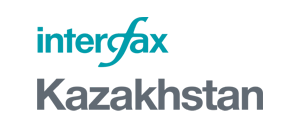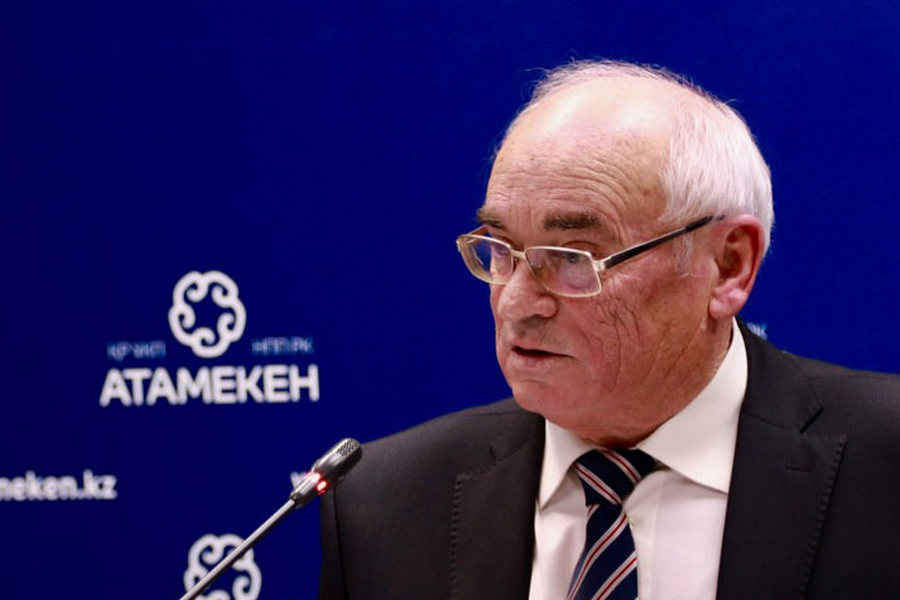KASE Chairperson Alina ALDAMBERGEN:
TWO STOCK EXCHANGES TOO MANY FOR KAZAKHSTAN BUT WE ARE READY FOR COMPETITION

Kazakhstan Stock Exchange (KASE) introduces new instruments to the domestic market to make it more attractive, works with entrepreneurs in the regions of the country and attracts foreign brokers to the domestic stock market. KASE may have to revise its approaches to financial operations after the stock exchange of the Astana International Financial Center opens next year. KASE Chairperson Alina ALDAMBERGEN told Interfax-Kazakhstan in an interview how the stock exchange will operate in new conditions.
- Do you think the KASE operations will change after the Astana International Financial Center (IFC) and the Astana Stock Exchange open?
- Two stock exchanges will be too many for Kazakhstan. KASE is a domestic platform for Tenge transactions with domestic issuers and investors, for loans secured by currency and securities, for risk hedging and money transfer. This market performs very efficiently when it is concentrated in one place, for this creates more opportunities for investors.
As the Astana IFC will operate based on the principles and rules of the law of England, I think they will focus on large issuers, those who can meet high due diligence requirements, and on foreign brokers that will attract foreign investors. The market will thus be divided.
The exchanges will compete with each other and we are ready for such competition. That fact that we have a greater number of trading instruments will be our competitive advantage, which will enable us to attract more players. The Astana IFC will focus on transactions in foreign currencies.
- How will KASE expand the number of instruments?
- The market was in stagnation for the last three years due to a number of factors including institutional constraints, the macroeconomic situation, the consolidation of the pension plans into the Unified Accumulative Pension Fund (UAPF), the devaluations of the national currency, after which Tenge-denominated bonds became unattractive for the investors. During these three years, the only active players on KASE were quasipublic companies whose shares were usually bought by UAPF. However, this year has already seen eight issues of shares that have now been bought not only by UAPF but other investors as well, including institutional investors, broker companies and their clients.
Last year, we launched a new instrument – short-term bonds with a maturity of up to one year - so that the companies could attract money in the stock market for six to twelve months during the high base rate period at a reasonable price. Such securities were issued last year by three issuers: JSC PavlodarEnergo, JSC SevKazEnergo and EastComTrans LLP, which raised 1.8 billion tenge for a period of up to one year. This year, such bonds are still in demand as the base rate and inflation are on the decrease. This means that the yield on bonds will decrease in the medium term too.
- Last year KASE adopted a new development strategy. Has it produced any results yet?
- Yes, it has. Since the beginning of the year, the KASE index has increased 15.1%. The total trading volume in the five months reached 69.6 trillion tenge, which is an increase of 69.5% or by 28.5 trillion tenge compared with the same period last year. This year, ten of the issuers started trading on KASE in 13 new instruments. The number of issuers trading in non-government securities has totaled 143, of which 104 issuers trade in shares and 66 in corporate bonds. Eighteen issuers were listed on KASE in 2016, of which 14 companies were new issuers on our stock exchange. The debt security sector of KASE saw 29 issues by 19 companies last year.
Also, we developed instruments for middle-sized businesses. Starting from June 1, KASE eased listing rules for domestic companies and lowered listing fees for small- and medium-sized companies.
All this should lead to an increase in the number of issuers and, as a result, in the capitalization of the market and the trading volume. We expect the number of listing instruments to rise by 30% by the end of 2018 compared to the 2016 target. The number of corporate security issues may reach 170 in 2016-2018. The capitalization of the stock market should amount to at least 15.7 trillion tenge or about 33% of Kazakhstan’s expected GDP.
- What regions are mostly interested in the stock market?
- This is the traditional business centers: Almaty, Shymkent, and Astana. However, the industrial regions, for example Pavlodar, also have large companies and medium-sized businesses that attract financing.
- What can be done to develop the domestic stock market? What solutions can KASE offer the market today?
- We work with the investor base, including insurance companies, pension funds and banks, and of course with the retail base. For example, in the liquid stock market 50% of our active players are retail investors. The retail base is growing. The central depository opened 107,000 accounts. Retail investors buy both notes and bonds because the rates on these securities are high. Last year saw a 3.3% growth. This indicator has soared tenfold in the last five years. Retail investors are interested not only in shares but also in notes and bonds, because the rates on them are quite attractive - above 10%.
We also attract brokers from abroad. Now we are focused on the Russian market - we connect remotely Russian brokers so that they could work on KASE and could also help create a demand. This year one Russian broker - Univer Capital from Moscow - became a member on KASE in the “stock” and “derivatives” categories.
- What is the critical mass of issuers and investors for KASE?
- For example, we have eight companies with most liquid shares in our index and 17 companies trade on KASE. We need at least 20-25 large issuers that could actively trade on the stock exchange. There has been recently a third IPO with the participation of retail investors on KASE. Astana Bank has placed 5.6 million of its shares in the amount of 6.5 billion tenge under this IPO. Earlier, BAST and Aktobe Metal Structures Plant placed their shares on the stock exchange and raised 1.5 billion and 800 million, respectively. The share of retail investors in these issues exceeded 90%, which demonstrates a high interest by the population in securities of the domestic issuers.
Many of the issuers are listed both on LSE and KASE. A greater number of the investors trade there and only local investors trade here, and the volume of local trades are smaller. We would like large investors to conduct their IPOs in Kazakhstan. This could help bring other large foreign investors here.
We need to continue our effort in attracting local investors, including private and institutional investors, as well as the pension fund.
- The National Bank is going to offer the population notes at a rather high rate. Do you think these notes can compete with other securities?
- Notes of the National Bank is an additional investment instrument for the population. You can not compare notes and shares or bonds of the corporate issuers or deposits of the banks – the rates on bonds or deposits are higher as the risks are higher compared with the government securities. This particular instrument aims to attract private investors to the stock market without additional risks at an attractive rate of return, which is higher than the expected level of inflation - 10.5% plus or minus 1%.
- What is the share of foreign investors in our market?
- In the stock market, the share of non-residents decreased to 4.4%, in the corporate bond market - to 6%. The number of foreign investors used to be higher.
- What results did KASE demonstrate this year?
- In the five months of this year, the total trading volume on KASE totaled 69.6 trillion tenge, which is 69.5% higher compared to the same period last year.
The trading volume in the stock market reached 125.2 billion tenge with a total of 34,837 transactions concluded. The average daily trading volume was at 1.3 billion tenge, the average daily number of transactions at 352.
The stock market saw 34,301 transactions totaling 57.2 billion tenge in value or a decrease of 5.5% year over year. The volume of initial public offerings amount to 1.1 billion tenge or a 100% increase and the value of secondary public offerings on KASE came to 56.1 billion tenge or a decrease of 7.3% from the same period last year. The KASE index rose by 204.98 points, or by 15.1%, to make 1562.85 points. The main index of the stock market still remains at a higher level compared with the previous year. Capitalization of the stock market stood at 16.6 trillion tenge as at May 31, 2017.
The trading volume in the corporate bond market amounted to 52.7 billion tenge or a decrease of 66% year over year.
The trading volume in the spot market amounted to 4.199 trillion tenge or down 7.1% compared to the same period of the last year (4.522 trillion tenge). The trading volume in the swap market soared by 193.8% to reach 35.2 trillion tenge. Average currency swap rates increased by 2.7 percentage points to stand at 9.5% as at May 31, 2017.
The trading volume in the repo market rose 23.5% to 29.6 trillion tenge. Since the beginning of the year. In January-May, the TONIA rate (repo overnight) declined by 2.1 percentage points to 10%. The money market rates decreased following the National Bank's base rate that today stands at 10.5% ± 1% per annum.
- Thanks for your time!
July, 2017
© 2025 Interfax-Kazakhstan news agency
Copying and use of these materials without reference to the source is prohibited
Archive





